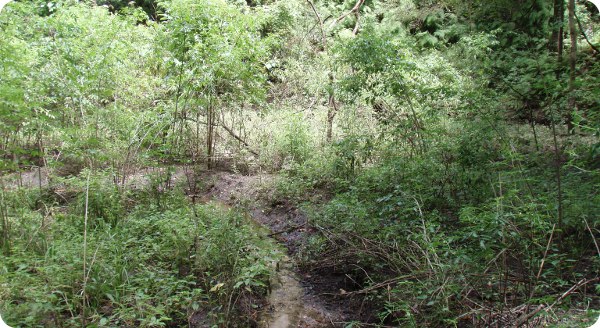
|
History of Devil's MillhopperLearn about the history of Devil's Millhopper as you step back through time and discover north central Florida's exciting past. Although geologists can't say for certain, the Devil's Millhopper sinkhole probably started forming ten to fifteen thousand years ago. Here are the historical and informational descriptions from some placards around the park: Devil's Millhopper NameDuring the last century, the grist mill was a familiar place to most rural families. Grain was fed into the mill from a funnel-shaped container called a "hopper." The early homesteaders of this region found this sink to resemble a large millhopper which could feed grain into the Devil's Mill at the center of the earth. Thus the name - "Devil's Millhopper." Geological OriginsEver since the earth was formed its face has been constantly changing. Volcanos have erupted, mountains have been uplifted and worn down by erosion, glaciers have advanced and retreated, continents have been shaped and reshaped by the rise and fall of oceans, and each rain etches and carves the land surface as well as the bedrock into which it seeps. The story of Devil's Millhopper is one act in nature's continuing drama called "change." The SinkholeThese depressions in the limestone have a very moist climate. They usually support a unique mixture of tropical and temperate plants because of the lack of temperature extemes within the sink itself. Amphibians such as the salamanders, and invertebrates such as crayfish find refuge within the confines of the steep slopes, which often flow with seepage from surrounding areas. Vegetation around the upper rim of sinkholes is usually characterized by well developed stands of hardwood trees. Steeper rock walls are covered with mosses, liverworts and ferns. How a Sink is FormedLimestone is the foundation on which the surface of Florida rests. Although this stone is very hard, it is easily dissolved by a weak acid. As rain water soaks into the ground passing through dead plant material on the surface, it becomes a weak acid. When this water reaches the limestone layer, small cavities are formed as the rock is slowly dissolved away. Water moving horizontally through cracks in the limestone also causes cavities to develop. This process continues over a very long time until a large cavern is formed. Eventually, the ceiling of the cavern becomes so thin that it cannot support the weight of the earth above it. When the ceiling collapses, a sink is formed.
|
|
